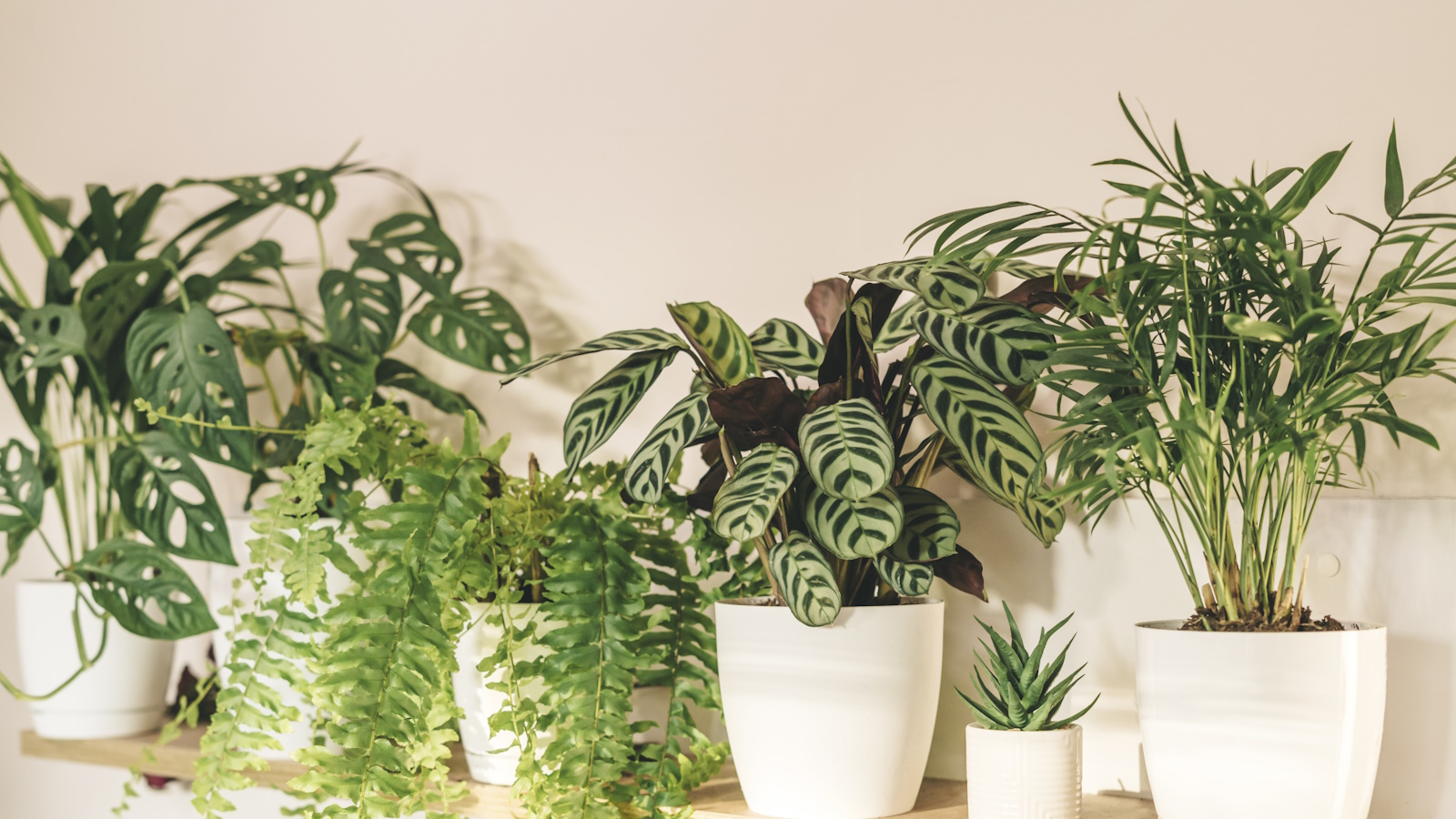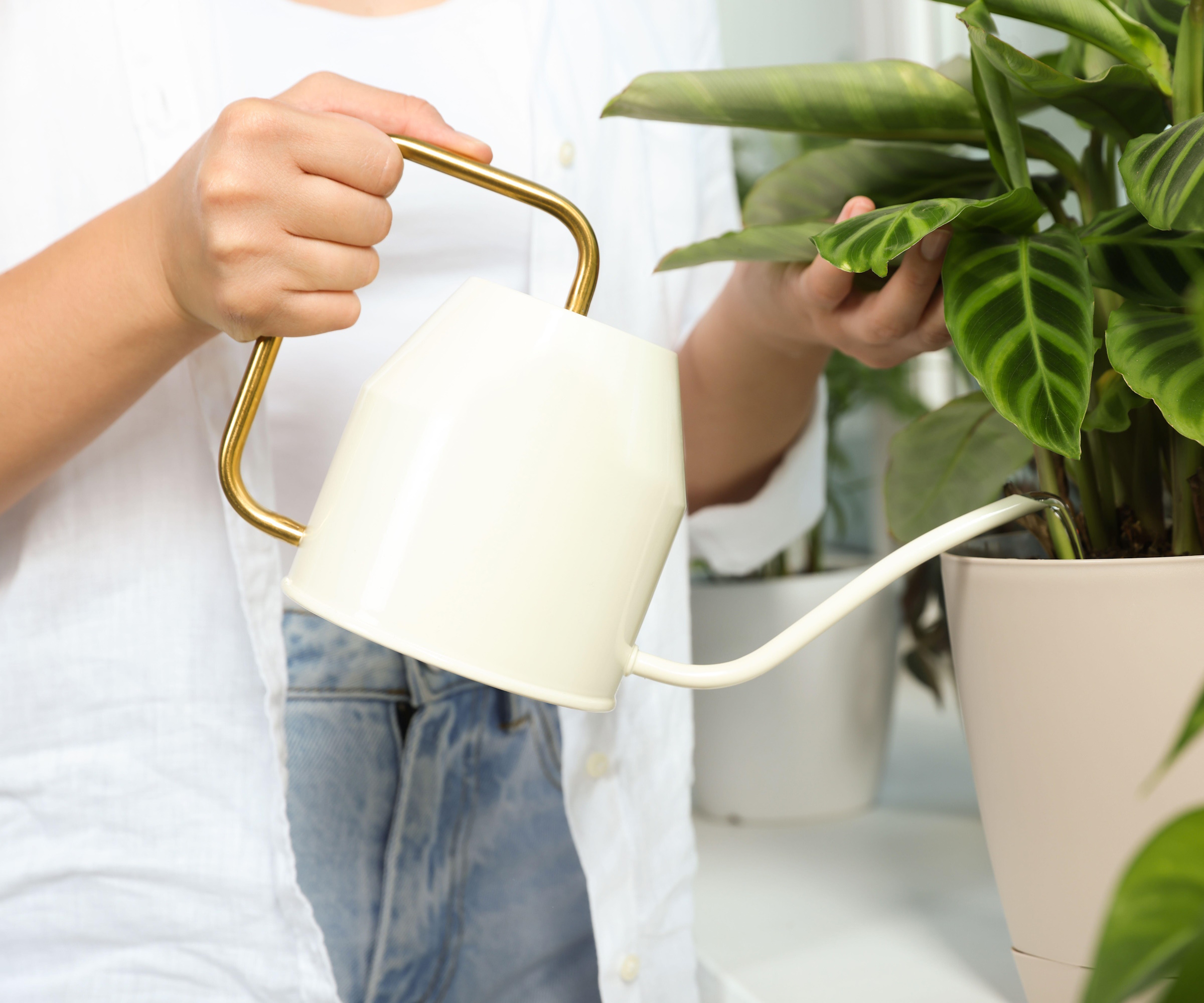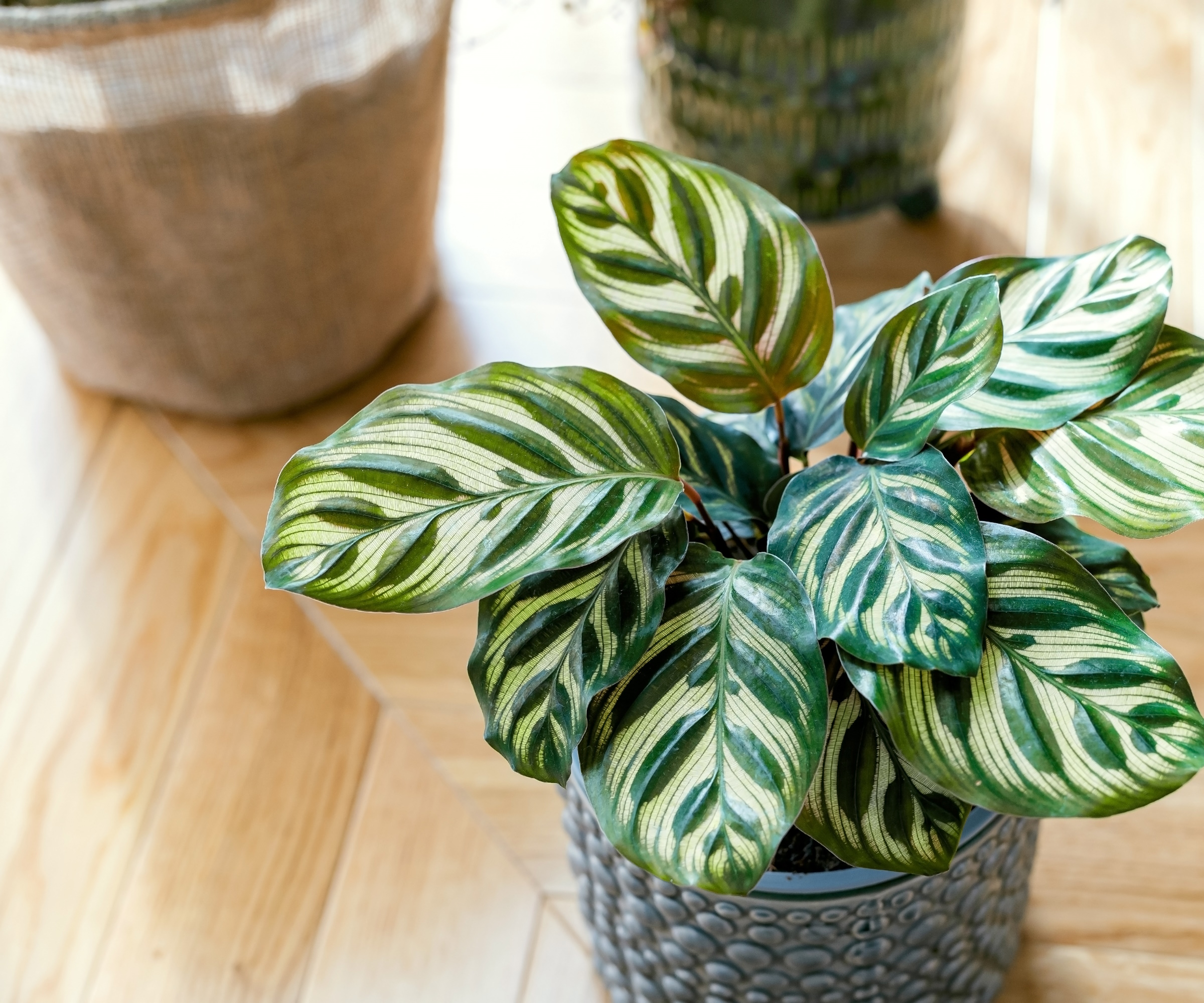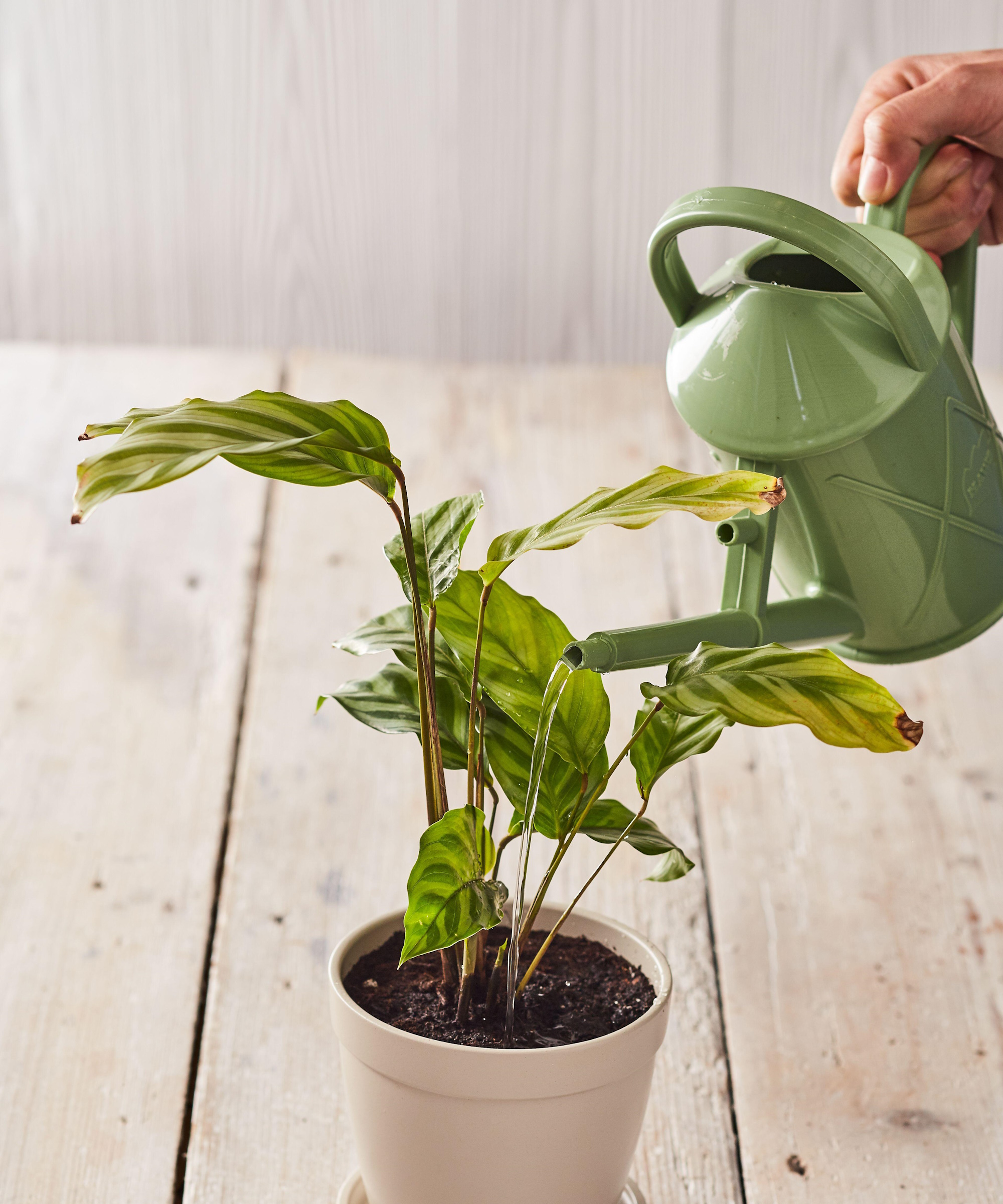Why are the leaves on my calathea curling? We provide details on the causes and remedies
Here's what curling leaves says about the health of your calathea plant, and the steps you can take to remedy the issue


If you're asking yourself 'why are my calathea leaves curling?', we are here to help explain.
Calatheas are among the most beautiful of houseplants, with highly ornate, patterned leaves that can be round, oval, or spear-shaped. The attractive peacock plant is a variety of calathea. They are hugely popular for their decorative look and are relatively low-maintenance.
However, like all of the best indoor plants, calatheas can suffer from ill health, and curling leaves are a sure sign that you may have made a common calathea mistake and you plant needs a bit of help.
We've identified several key reasons why your calathea's leaves may be curling, and provided all the info on how to nurse your plant back to health.

Why are my calathea leaves curling?
There are three key things to look for if you find the leaves on your calathea plant are starting to curl. We look at the possible causes and the best remedies.
1. Incorrect watering

Calatheas prefer their soil to be consistently moist, though not waterlogged. It is advisable to never let them dry out.
You can test the soil very simply by applying the so-called finger test: place a finger two inches into the soil, and if it is dry that is a clear sign it's time to water your calathea.
Design expertise in your inbox – from inspiring decorating ideas and beautiful celebrity homes to practical gardening advice and shopping round-ups.
Generally speaking, a lack of ambient humidity can also cause curling leaves. There are ways to increase your calathea plant’s humidity levels by misting with lukewarm water, positioning on a pebble tray, and by grouping it together with other plants.
Watering plants incorrectly is almost always at the source of any problems, and overwatering can be as damaging to calathea leaves as under-watering.
If you find your calathea's leaves are curling even though the soil isn't dry, the plant might have been overwatered and its roots have started to rot. If this is likely the case, the best course of action is to take the plant out of its pot and examine the roots. If you can see that any of the roots have started going black, repot your calathea into fresh potting compost to allow it to recover. We love this reusable plant mat, available from Amazon, for repotting houseplants indoors.
2. Changes in temperature

Tropical plants dislike huge temperature fluctuations, and this is true of calatheas. As such, try not to position your calathea too close to a heat source, such as radiators, or drafty windows
'Like most houseplants, calatheas don't like being exposed to cold drafts and can react by curling their leaves,' says Homes & Gardens houseplant expert Holly Crossley.
'With this in mind, make sure you keep them safely away from air conditioning units and drafty windows and doors in winter. On the other hand, temperatures that are too high can also lead to this problem due to the plants drying out, so placing them near central heating should be avoided, too. A steady temperature between 65-85°F is best,' Holly adds.
Strong sunlight is another thing to watch for when it comes to calathea care. Try to place your calatheas away from direct sunlight as this can cause permanent damage to their leaves.

Holly is a former allotment keeper and professional gardener. She now spends her time tending to her many houseplants and writing about gardens and outdoor living as a contributing editor for Homes & Gardens.
3. Using tap water

Finally, if you've tried everything and your calathea leaves still look unhappy, the culprit may be the water itself.
'Water that is hard and rich in salt and other minerals is toxic to calathea plants,' says Rachel Bull, Homes & Gardens' Head of Gardens. 'If you are using tap water to irrigate your houseplants, it may be the case that this is doing them more harm than good.
'In my experience, if you can switch to watering with rainwater or distilled water this works better for all houseplants, and certainly for calatheas,' she adds. 'You can harvest rainwater by collecting it in a water butt in your yard, or a barrel at the end of a rain chain. This is a more sustainable solution to watering than using tap water, and I can assure you your plants will be happier as a result.'

Rachel is a gardening writer, flower grower and floral designer. After 15 years editing and writing for a range of consumer, business and special interest titles, Rachel became editor of floral art magazine The Flower Arranger. She then trained and worked as a floral designer and stylist in London for six years, and joined the Homes & Gardens team in 2023.
FAQs
Are calathea's difficult houseplants to care for?
Calatheas are not the most difficult houseplant to look after, providing you understand their optimum growing conditions. As tropical plants that are native to the South American jungle, they grow naturally on forest and jungle floors, where the tall canopy of trees restricts the light. Avoid putting them in direct sunlight, as this could damage their leaves, and try to boost humidity by misting or placing them amongst other houseplants.
How do you propagate a calathea?
Calathea propagation is done by division, where you remove the plant from its pot and shake off any compost from around the root ball. You then gently pull apart the leafy stems with your hands, so that you have two or three clumps, each with some healthy roots attached.
Once you've nailed the right care conditions for these stunning houseplants, you might want to add more tropicals to your collection, such as a monstera, ZZ plant, kentia palm, or a bird of paradise.

Anna is a professional writer and academic. She taught English Literature for several years before joining Future where she wrote for Real Homes, Homes & Gardens and Livingetc for four years. She is a regular contributor for Parade Home, BiggerPockets, and many other publications. In her spare time, Anna enjoys hiking and gardening.